| See Issue Online | Archive |

|
|
December 2012 | Issue 64
|
Forward to a Friend |
Subscribe
|
Dear <<First Name>>,
Best wishes of the season to everyone!
We're in the midst of our WPT 3 Campaign, and it's been phenomenal! Your support is outstanding - we're well over half way to our goal of raising $75,000! We're so grateful to everyone who has answered our call for help, you've been amazing! Your support directly helps our WPT 3 parrots: the Blue-throated Macaws, the Yellow-crested Cockatoos and the Great Green Macaws. These three species are at risk from so many pressures, and will continue to need our help for years to come. But we are making progress! With solid effort, they CAN survive. So let's keep up the momentum, and get to our goal of raising $75,000 to Save the WPT 3. We can do it!
With many thanks,
Desi Milpacher, Flock Talk editor

In This Issue
The WPT 3 Field Projects
Yellow-crested Cockatoo
|
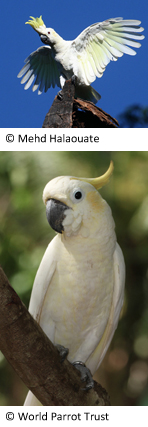
|
Long identified by the World Parrot Trust as a species of concern, early efforts to protect this cockatoo focused on gaining international protection by encouraging CITES to list it as an Appendix I species. Recent conservation efforts have centered on a one-year collaboration in beginning in 2011 with the Indonesian Parrot Project (IPP) and Konservasi Kakatua Indonesia (KKI), to assess the current population status of the cockatoo on the islands of Sumba, Pasoro, Komodo, Rinca, Nusa Kode, Gili Motang, and Masakambing. On a trip to one of these islands, WPT Director Jamie Gilardi recorded his thoughts and impressions of the status of this fragile species, and of the island of Komodo.
Read the update (PDF) »
More WPT 3 News from the Field »
|
Species Profile:
Blue-throated Macaw
|
Genus: Ara
Species: glaucogularis
World Population: 110-130
Range: Occurs only in the seasonally flooded savannahs in Llanos de Mojos in northern Bolivia, being concentrated east of the upper Río Mamoré, Beni.
Ecology: Presence in any area depends on availability of palm fruits. Generally occurs in pairs although may roost with other species. Consumes ripe and nearly ripe fruit; also palm fruits, seeds and leaves.
Habitat: Found in flooded areas, such as savannas, palm groves and tropical forest in wet lowlands. Found up to 300m (984 ft).
Threat Summary: Intensive historical harvesting of these birds, nest tree loss, nest failure from predation by other animals, extreme weather patterns (flooding and drought) causing the loss of eggs and chicks, parasitic botfly infestation, and brood reduction, a common result of the normal process of hatching in parrots, which results in the loss of the youngest chick or chicks in a clutch.
IUCN/CITES Rating: Critically endangered, Appendix I
Learn more about the Blue-throated Macaw »
|

|
Zazu's House
By Emily Lott Robinson
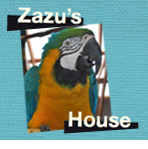
|
New WPT Blogger Emily Lott Robinson entertains with this charming and vividly written story of her volunteer effort at Zazu's House, a very special place for rescued parrots.
Read the story (PDF) »
|
How Do I Know if My Parrot is Sick?
Dr. Brenna Fitzgerald, DVM
|
The holidays are a time of gatherings and good cheer, but all this merry-making sometimes results in some unexpected events - like having to deal with a sick bird. Dr. Fitzgerald explains how to recognize the first signs of illness in our avian friends.
Read the article (PDF) »
|
The WPT 3 Great Green Macaw Partners
ARA Project, Fundación Jambelí and Fundación
Pro-Bosque
|
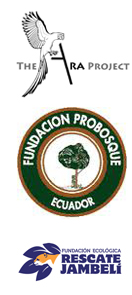 The World Parrot Trust first supported Great Green Macaw research in the 1990s with biologist Oliver Chassot and his team, working on a multi-faceted conservation project intended to protect unique lowland Atlantic forest in Costa Rica to benefit these birds. Now WPT has partnered with ARA Project in Costa Rica, and Fundación ProBosque (Pro-Forest Foundation) and Fundación Ecológica Rescate Jambelí in Ecuador to help restore Great Green Macaw populations through captive breeding, rescue and release, and reforestation efforts. The World Parrot Trust first supported Great Green Macaw research in the 1990s with biologist Oliver Chassot and his team, working on a multi-faceted conservation project intended to protect unique lowland Atlantic forest in Costa Rica to benefit these birds. Now WPT has partnered with ARA Project in Costa Rica, and Fundación ProBosque (Pro-Forest Foundation) and Fundación Ecológica Rescate Jambelí in Ecuador to help restore Great Green Macaw populations through captive breeding, rescue and release, and reforestation efforts.
The ARA Project began breeding macaws for release into the wild at their breeding centre in Rio Segundo de Alajuela in the early 1980s. Their first-ever release of Great Greens was in August of 2011; they were the first of their kind to be raised specifically for release into protected areas.
The Pro-Forest Foundation began its Great Green Conservation Program in 1993. Their work has focused on protecting active nest sites, macaws and other wildlife from poachers and habitat restoration with native tree species used as both food and nesting trees for macaws. They have also presented environmental education programs in local communities with both school kids and honorary park wardens. Fundación Ecológica Rescate Jambelí is an organization that works to protect the environment and biodiversity by promoting the conservation of the flora and fauna of Ecuador. Emphasis is placed on species threatened by habitat destruction and the illegal trafficking of wildlife.
WPT is pleased to be collaborating with these hard-working organizations to protect the Great Green Macaw! Our thanks to them all for all their efforts.
Help us continue the work! Visit
www.parrots.org/wpt3
|
|
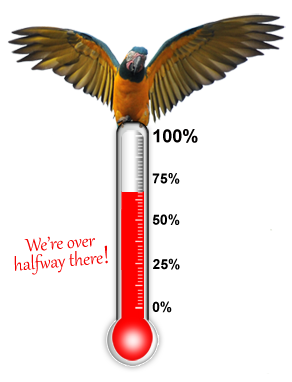


 |  | Test Your Parrot IQ
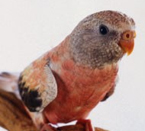
1. The scientific name of this parakeet is Neophema bourkii. What is it?
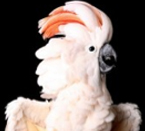
2. This magnificent cockatoo is classified as Vulnerable in the wild. Name it.
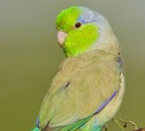
3. Name this tiny parrot.
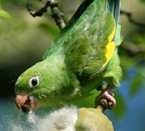
4. This parrot is from South America. What is it?
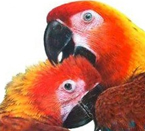
5. This macaw was last seen in 1864. Name it.
(Click photos above for
the answers.)
For more information »
Also visit our photostream
at Flickr »
|
 |


|
|
Events and Other Good Things
Creative people supporting parrots
|
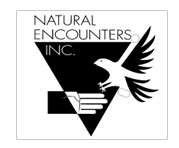 NEI Workshop Series: NEI Workshop Series:
Contemporary Animal Training and Management
Designed for professional zoo keepers, trainers, and wildlife educators, this comprehensive 5-day workshop led by Steve Martin and Susan Friedman Ph.D teaches the core scientific principles of behaviour needed to train operant behaviors efficiently and humanely. With extensive classroom instruction and hands-on training experiences, students who complete this workshop will be better able to meet even the most complex training challenges, provide more enriching animal environments, and design educational programs that inspire the next generation of keepers, trainers and conservationists.
Date: January 12-17, 2013
Location: Natural Encounters, Winter Haven, FL, USA
Cost: $1500(USD) per person ($100 per person discount for Susan Friedman's LLP/LLA graduates, or multiple attendees from the same institution.)
Learn More/Register: http://www.naturalencounters.com/
NEI Workshop Series:
Behavior Apps: Training with Art and Science
Under the leadership of Steve Martin and Susan Friedman, Ph.D, this 5-day workshop designed for companion parrot owners offers a balance of insightful lectures and hands-on experience with several birds from our extensive collection, providing the ideal setting to accommodate various training skill levels. Students who complete this workshop will be better able to modify even the most challenging behaviours, provide more enriching animal environments, and create more positive relationships with their companion parrots.
Date: February 2 - 7, 2013
Location: Natural Encounters, Winter Haven, FL, USA
Cost: $1500(USD) per person ($100 discount for Susan Friedman's LLP/LLA graduates, or return attendees)
Learn More/Register: http://www.naturalencounters.com/
NEW COURSE:
Conservation Biology Techniques of Parrots and Macaws in the Peruvian Amazon
In collaboration with the Universidad Peruana Cayetano Heredia the Fenner School of Environment is organizing a university-accredited field course that is intended for enthusiastic individuals with keen interest in the tropical environment. This course is suitable for M.Sc., undergraduate students in the last 3 years of their degree, and individuals who want to learn from experts about parrots and macaws of the Peruvian Amazon.
Date: February 4 - 11, 2013
Cost: $2,750 (USD) per person
More information: http://people.anu.edu.au/george.olah/index.php/course-2013
Register: Visit the website »
For more event listings, visit the WPT website at:
http://www.parrots.org/index.php/parrotnews/Events/
|
Want to submit a story?
We welcome contributed articles. For more information, please see our writer guidelines or contact us at flocktalk@worldparrottrust.org.
Want to reprint a story?
No material in this publication may be reproduced without permission from the World Parrot Trust. To request permission contact us at flocktalk@worldparrottrust.org.
Comments?
Please contact us at flocktalk@worldparrottrust.org.
Remember to add flocktalk@worldparrottrust.org to your address book or safe senders list.
|
|
Update your profile |
Forward to a friend |
Unsubscribe
WPT Online | Donate | Shop |
Privacy Policy | Disclaimer | Contact | About
|
|
© 2012 The World Parrot Trust | Glanmor House Hayle, Cornwall TR27 4HB
|
|




|
|







![]()








 The World Parrot Trust first supported Great Green Macaw research in the 1990s with biologist Oliver Chassot and his team, working on a multi-faceted conservation project intended to protect unique lowland Atlantic forest in Costa Rica to benefit these birds. Now WPT has partnered with ARA Project in Costa Rica, and Fundación ProBosque (Pro-Forest Foundation) and Fundación Ecológica Rescate Jambelí in Ecuador to help restore Great Green Macaw populations through captive breeding, rescue and release, and reforestation efforts.
The World Parrot Trust first supported Great Green Macaw research in the 1990s with biologist Oliver Chassot and his team, working on a multi-faceted conservation project intended to protect unique lowland Atlantic forest in Costa Rica to benefit these birds. Now WPT has partnered with ARA Project in Costa Rica, and Fundación ProBosque (Pro-Forest Foundation) and Fundación Ecológica Rescate Jambelí in Ecuador to help restore Great Green Macaw populations through captive breeding, rescue and release, and reforestation efforts. 





 NEI Workshop Series:
NEI Workshop Series: